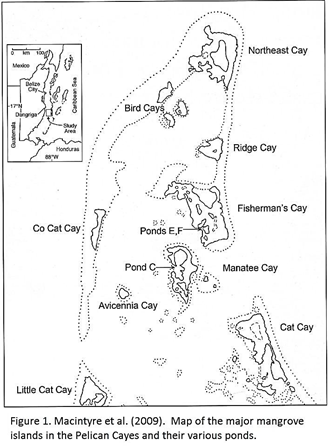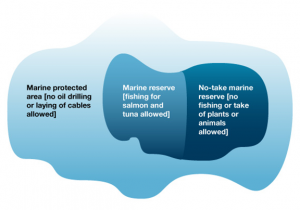Sea Ranching: More Economically Feasible then Other Harvesting Techniques?
By Samantha Feingold,
Marine conservation student

Atlantic Cod fish (Gadus Morhua). A common commercial species. This study investigated the economic feasibility of various harvesting practices. (NOAA, 2010)
In Need of Protein!
Fifty or sixty years ago, fishermen’s catches were much more diverse and productive. Routinely fishermen returned to their slips to show off several tuna and grouper, sizing longer then the workers were tall. Looking back at old photographs of a daily catch, one would think the fish were prehistoric or from a science fiction movie. It was fabled that colonists of New England appeared to walk over water via the backs of codfish or lobsters. Today, catches have significantly downsized; the fish are much smaller and the catches are less diverse. As a result, fishermen are being forced out of the industry or otherwise seeing a smaller profit. Meyers and Worm (2003), prominent marine biologists, have reported that 90% of large predatory marine fish in several areas have been depleted–and most fishermen would agree. Meanwhile, human population continues to rise. Today global population is 6.9 billion. If the growth rate stays constant, it is projected that by 2050 global population will reach 9.3 billion people (the difference being the current population of China and India combined; UN 2011). In 2009, fish consumption was 12.4 percent of total animal protein globally (24% in low income food deficit countries; FAO 2012). As human population rises and fisheries continue to decline, a global crisis for fish protein is escalating. The advancement of fishing technology, poor fisheries management, and growing population, are combining to create a global demand for aquaculture.
Aquaculture: A Diverse Industry
The urgency of aquaculture innovation is relatively recent, but the industry is beginning to see a boom, especially in South America and Asia. Aquaculture is the umbrella term for fish farming and is most commonly visualized as growing fish in ponds, tanks and offshore cages. It is often understood as producing fish from eggs, growing them to marketable size, and breeding them to produce viable eggs, which is called full-cycle aquaculture. Within full-cycle aquaculture, the spectrum of diversity of systems is wide, yet there is a great need for advancement. But other than full-cycle aquaculture, newer, less recognized forms of aquaculture exist: for example, sea ranching.
The Study
In a recent study by Halldórsson, et al. (2012) the authors investigate a type of aquaculture termed ranching, whereby fish are attracted in their natural environment to a certain location repeatedly and then ranchers harvest them as a group once they have reached a marketable size. This does not involve caging the fish. This practice is also commonly referred to as herding or aggregating fish. Most ranching practices utilize feed to attract the fish, although there are recent studies trialing the use of acoustics as the attractant. This type of ranching differs from the practice of on-growing, whereby fishes are captured as juveniles, then fattened up in offshore cages before finally harvesting them for market. Halldórsson et al. suggest that sea ranching can be more economically feasible than full-cycle aquaculture, traditional fishing and on-growing. I will consider this thesis.
Methods
Halldórsson, et al. compared production of coastal cod (Gadus morhua) in Iceland. The study examines which practice would be most profitable for an existing fishing company with a 200 ton cod quota, fishing permit and 30 ton boat: continue to fish, ranch, on-grow, or develop a full-cycle aquaculture system. For each of the practices the authors studied various inputs and outputs to estimate the overall net profit and thus economic feasibility of the practice within a fifteen year operating period. To investigate the profitability of ranching, Halldórsson and his team analyzed the work of a particular ranching business that trained the fish to eat at feeding bags that were anchored to the ocean floor. The fish were harvested using a large net that collected them at their feeding stations and then unloaded onto a boat. For fishing, full-cycle aquaculture and on-growing, the authors used data from past studies, supplemented by knowledge from other scientists, aquauculturists and fishermen.
Results
The results showed that ranching was the most profitable, followed by fishing, and then on-growing. Full-cycle cod farming proved not to be profitable and was predicted to remain unprofitable due to high feed costs, the low market price of cod, as well as a relatively high feed conversion ratio (i.e., the ratio of mass of feed to mass of fish produced).
In addition to economical benefits, the authors argue that ranching is advantageous because it does not reduce conventional fishing practices, and will produce a greater yield for human consumption. The authors further argue that ranching reduces the negative impact on the fisheries by minimizing the catch of undersized fish and bycatch (the accidental catch) because of their acquisition strategy. The fish are trained to aggregate at the feeding stations, which makes targeting them easy and avoids the use of harmful fishing techniques.
Analysis of Study
The results of the study are not surprising. Ranching requires fewer inputs than any of the other practices which make it more economical within the analyzed time period. Because the fish roam their natural environment the feed costs are much less then on-growing and full-cycle fish farming. The study estimates that half the feed for ranching and on-growing is wild fish that the cod prey on outside the feeding stations. Feed is often the most costly budget item for aquaculture farms. Therefore, halving the feed reduces the company’s overall expenses significantly.
Cod fishing was concluded to be the second most profitable practice. This might be true if we disregard that cod populations are in decline. Although cod populations in Iceland are healthier than they are in the Western Atlantic, the fishery is most likely not sustainable. Árnason et al. (2009) predict that the Icelandic cod fishery will collapse like the Eastern Cod fishery due to persistent fishing pressure energized by growing demand. As cod continues to be overfished, the cod fishery will become less and less feasible. The Halldórsson, et al. paper does briefly acknowledge this. Its purpose is not to encourage fishing, but instead scale the economic feasibility of the various practices relative to traditional cod fishing; fishing being the baseline to which the other practices are compared. Its analysis does not however, calculate the economic or practical probabilities of the declining cod fishery.
On-growing was proven to be unprofitable, which is emphasized by the closure of several on-growing businesses in Iceland. The study neglects to address a negative factor of on-growing which is harvesting the fish when they are likely sexual immature preventing the fish from reproducing. This practice can be argued is worse than traditional fishing because it prevents the success of the future generations.
It should be mentioned that ranching and on-growing are just different ways of harvesting from the open ocean. One important advantage of these two practices over fishing is they return a greater yield because feeding them consistent, nutritious food before harvesting them increases their biomass. Ranching and on-growing does not decrease the pressure on wild cod populations in any known manner.
In the study, full-cycle cod farming saw no profit in the fifteen year timeframe. The concept of full-cycle aquaculture is to efficiently create an environment that mimics the species’ natural environment in order to grow healthy fish, which is a very costly task. In order to earn a profit, it must be large scale, have very significant initial funding and be prepared to operate for years before making a profit. Full-cycle farms are a bigger investment that a 30-ton boat, quota and fishing permit. The practice is currently still developing and evolving, with various inefficiencies to resolve.
The study makes the logical conclusion that full-cycle fish aquaculture is less economically feasible then the other practices. This should not be understood as saying that full-cycle aquaculture will never be profitable given sufficient capital and time. The study was intended to show fishermen who are trying to evaluate their alternatives, which of the different practices is most practical.
Positive Future for Ranching?
Although at first glance the paper might seem skewed (or uneducated regarding full-cycle aquaculture), its purpose as a tool for current cod fishermen is useful. Sea ranching is an interesting concept. It could be a beneficial investment for a fisherman who is looking to get out of conventional fishing. There are issues that must be investigated further, however, including the fidelity of the fish. What if the fish migrate? The study stated that if the ranchers do not harvest 75% of the conditioned cod or more, the economical feasibility would not be viable. Also, what prevents other fish from being attracted to the feed bags? In that case, the ranchers are not only feeding undesired fish costly feed, but they will catch them (an important conservation concern). Lastly, there is a lack of permitting available for these ranchers. Local or commercial fishermen could easily take advantage of the aggregated fish in the area unless they are protected somehow. These are speed bumps that probably could be resolved. Ranching could be beneficial if healthy fish populations are targeted. Ranching, as the authors defined it, may be an effective approach to lessen the negative impact that overfishing has on fishermen and the fishing industry. It is not a large step away from traditional fishing practices, but could have a positive impact on the cod fishing industry (fishermen, processors, buyers and sellers, etc). This is not the solution to declining cod fisheries, but a compelling concept that could be utilized in the meantime.
REFERENCES
Halldórsson, JE., Björnsson B, Gunnlaugsson SB (2012) Feasibility of ranching coastal cod (Gadus morhua) compared with on-growing, full-cycle farming and fishing. Mar Policy 36: 11-17. doi:10.1016/j.marpol.2011.03.001
Arnason, Einar. Intense habitat-specific fisheries-induced selection at the molecular Pan I locus predicts imminent collapse of a major cod fishery PLoS ONE. 4: 1-14 DOI: 10.1371/journal.pone.0005529. http://www.plosone.org/article/info%3Adoi%2F10.1371%2Fjournal.pone.0005529 (accessed 26 Oct 2012).
Food and Agriculture Organization (FAO) (2012) http://www.fao.org/docrep/016/i2727e/i2727e.pdf (accessed 1 October 2012)
Myers, RA, Worm B (2003) Rapid worldwide depletion of predatory fish communities. Nature 423: 280-283 http://billhutten.s3.amazonaws.com/fw/docs/261.pdf (accessed 1 October 2012)
United Nations (UN). World Population Prospects: the 2010 Revision: Highlights and Advanced Tables (2011) In: United Nations Department of Social and Economic Affairs/Population Division. United Nations, New York City, p 1-142 http://esa.un.org/unpd/wpp/Documentation/pdf/WPP2010_Highlights.pdf (accessed 1 Oct 2012)


